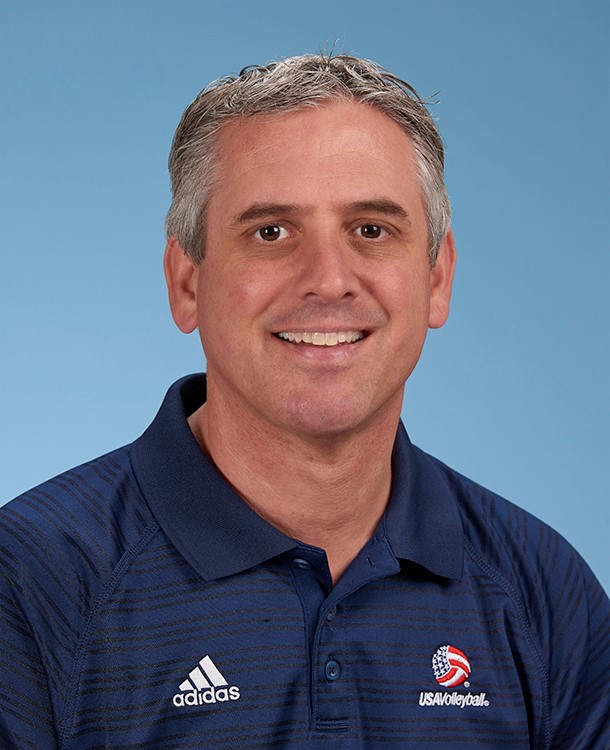Featured pediatric expert
Chris Koutures, MD, FAAP,
Dr. Chris Koutures attended medical school at University of Wisconsin-Madison. He completed both his internship and his residency at University of Wisconsin-Madison, and is American Board of Pediatric dual board-certified in pediatrics and sports medicine. He is the owner of ActiveKidMD Pediatrics and Sports Medicine in Anaheim Hills, Calif., where he provides specialty pediatric and sports medicine care. Dr. Koutures serves as the team physician for several sports teams and is an avid mountain biker when not exercising with wife Niki and three kids (Mary, Luke and Greg).

Transcription
Melanie Cole (Host): Welcome to Long Live Childhood, a pediatric health and wellness podcast presented by Children’s Health of Orange County. I’m Melanie Cole. And joining me today is Dr. Chris Koutures. He’s a pediatrician and Sports Medicine specialist at the CHOC Concussion Clinic and Sports Medicine Program. He’s here to tell us about keeping dancers healthy and injury-free.
Dr. Koutures, thank you so much for joining us today. I’d like you to start by telling us the most common dance injuries that you see. Are there any medical issues that you see, chronic overuse? What do you see in dancers most commonly?
Dr. Chris Koutures: With dancers, I think I see mostly what we call overuse or overload injuries. These can be usually of the lower body, which would be the hip, the knee, the foot, and the ankle. Often these are due to dancers who are dancing several hours a week, several days a week, and could represent overload due to learning new technique during periods of growth. And they often involve imbalances in muscle function, and they often will be seen getting close to a big competition or getting close to the big intensive as they increase their volume of dance.
Melanie Cole: Well, we are seeing more overuse injuries in these real dedicated athletes, and dancers are certainly a high enough level that these chronic overuse injuries are probably pretty prevalent. What about acute injuries? Are you seeing those, or not as much?
Dr. Chris Koutures: Well, I do see some. There’ll be dancers who will unfortunately land awkwardly and possibly injure their knee. Kneecap comes out of place, possibly a ligament injury. There’ll also be the dancer who lands awkwardly and rolls his or her ankles. Those are probably the two most common things I’ve seen. When dancers are partnering, especially if a male dancer is lifting a female dancer, sometimes there’ll be a shoulder issue that comes up because the lift was not done properly. And then, last but not least, a fair amount of concussions, especially if a dancer slips and hits the floor, or gets kicked. So, those are probably the most common acute injuries I see in the dance environment.
Melanie Cole: Are there certain ages where dance injuries are more common? We learned about ACL injuries in soccer players and, you know, pre-teens. Is dance similar to that?
Dr. Chris Koutures: I think you will see the majority of injury in our later elementary through high school population for several reasons. One, the complexity of dance is getting more intense. They’re going through growth spurts, they’re taller. They’re probably dancing at a higher level. So, there’s also then the years of cumulative dances have taken place. So, my population, I will probably see that. Again, late elementary to high school age is when I tend to see the most number of injuries that present to my clinic.
Melanie Cole: Talk to parents now, Dr. Koutures. How can they help reduce the risk of dance injuries in their kids? Because if you are a dancer, you’re real dedicated and you don’t want to, I know we’re going to talk about cross training, but you want to stick with it. You want to work as hard as you can and do your best. What can parents do?
Dr. Chris Koutures: Well, I think they can make sure they’re supporting their dancer both on and off the dance floor. Off the dance floor, are they getting eight hours of sleep? Are they getting appropriate nutrition? Are they going through the day with appropriate snacks? Because as you can imagine, dancers burn a fair amount of calories. And there is a bit of concern in the dance community when you’re wearing dance outfits, there’s mirrors and comparisons, people sometimes worry about body image. And if they’re not getting enough calories because they’re concerned about how their body looks, that can be a higher risk for injury. We also look at the amount of dance. When you look at studies that show If you do dance or sport more hours a week than your age, your risk of injury goes up. So if I’ve got a 13-year-old dancer who’s doing 15 hours more of dance a week, her or his risk of injury does go up. So as a parent, looking at that data and making decisions about the number of classes per week can also be quite helpful.
Melanie Cole: Are you seeing a difference with dancers who are on toe point?
Dr. Chris Koutures: Yes, we see a different injury profile when they’re on toe or on point. It’s obviously more demanding. It’s obviously a higher level of dance. It’s usually a dancer who’s more committed to his or her craft. And we definitely see not just the foot injuries, but injuries all up the chain, including the knee and the hip.
Melanie Cole: Yeah, that is a very hard sport. And I mentioned it just briefly, but should young dancers participate in strength training, other programs to reduce these chronic overuse injuries? Obviously, acute injuries are something else, but the chronic overuse that we’re talking about. Tell us about cross training and doing something else, because dance doesn’t have the seasons like baseball and we’ve got pitching limits and that sort of thing. It doesn’t really have seasons. So, how do we get our dancers to maybe swim or do something else so that they’re not so subject to that?
Dr. Chris Koutures: I definitely believe in cross training and the multi-activity, especially in the younger dancer, perhaps before high school. How do we integrate it? Yeah, it’s tough, because as you said, there is no off-season. There’s maybe that month off in the summer after your intensive, and that’s at least one opportunity.
I think seeking out, either in your studio or outside of your studio, other strengthening, it can be Pilates, it can be strength training. Dancers are sometimes afraid, “Well, I don’t want to get too big or bulked, but the honest truth is the greater core strength you have in the lower back, in the hip area, the less chance you’re going to get hurt, the better technique you’re going to have, and less risk of those overload injuries. So in a proper situation where that type of training is integrated with your regular dance training, we’ve definitely seen reductions in injury, we’ve seen athletes come back from injury stronger, and they feel like they can do more reps, they can leap higher, so it’s a performance enhancement as well.
Melanie Cole: Well, I love this topic and I love to watch dancers and they are so dedicated to it. It’s just a beautiful sport art. It’s so many different things. And Dr. Koutures, as we wrap up, final thoughts for parents, for dance teachers, and for the dancers themselves about reducing those injuries.
Dr. Chris Koutures: I think it’s important to appreciate the dedication to dance, no doubt about it, but to have that bigger picture of what else do I need to do or can I do to help myself as a dancer? And sometimes less is more. “Do I really need that additional technique class or choreography class if it’s going to affect how much sleep I get?” Or, “If I’m coming out of that class feeling tired, my technique is starting to fall off, and my injury risk goes up.” “Am I making sure I’m getting the nutrition I need? Am I making sure that I’m taking some time away from dance just to get relative downtime, work on other activities, and keep fresh for dance?” So, the big picture is obviously important. That’s where parents can team with medical professionals, dance instructors, to help create the most healthy environment for our healthy dancers.
Melanie Cole: Great advice and information. Dr. Koutures, thank you so much for joining us and sharing your incredible expertise with us today. For more pediatric health and wellness tips, please visit CHOC.org.
And that is it for this episode of Long Live Childhood, a pediatric health and wellness podcast presented by Children’s Health of Orange County. Together, we can keep kids happy and healthy. Please remember to share on your social channels as we’re all learning from the experts at CHOC together. I’m Melanie Cole.




